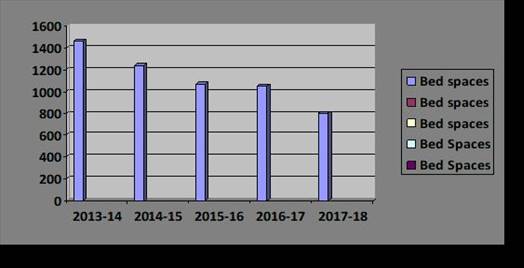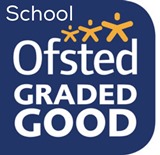IMPORTANT CONSULTANT INFORMATION - MUST READ!

IMPORTANT INFORMATION - MUST READ! Consultation in relation to potential residential closure and expansion of day places at Larwood School - CLICK HERE
Dear Sir/ Madam,
On the 1 May 2018 we officially opened our consultation period on the potential residential closure and expansion of day places at Larwood School. The initial part of the consultation process extended for the period of six weeks and included discussion with a list of targeted groups in order to consider the available options before Larwood School at this time.
Following review of the information received so far, I write to inform you that we are extending the consultation period.
At the time of writing, due to limited responses, we are aware that there may be parties that have not yet responded and may wish to do so. We are hopeful that wider consultation will allow all parties who may wish to do so an opportunity to respond before any final decision is presented to/made by the Governing Body and then, if appropriate, sent to the Department for Education.
Timings:
- This information is being sent to you on Thursday 19th July.
- The final deadline for all responses is on Friday 28th September.
Please note that this includes the summer holiday period and any responses sent during this time are gratefully received. Larwood School returns for INSET day on Wed 29th August and all pupils return on Thursday 30th August.
- The deadline date will be final and submission after this date will not be accepted.
Summary of work completed so far:
In preparation for the consultation on closure of the Residential provision at Larwood School the following actions have been taken:
- Held a full governing body meeting to discuss this issue and have maintained regular updates with the governing body
- I have spoken to all staff and explained the issues that we face and the potential routes forward
- I have conducted a number of individual meetings with staff
- I have sent information on this matter to Unions who represent staff that may be affected
- I have spoken to the local authority in person (Jennie Newman-Head of SEND) and have written to them
- I have made contact with and spoken to the Department for Education
- Ian Reid has spoken to all parents via the telephone about potential boarder cases, their merit (do they meet the criteria) and if the pupil concerned wanted to board.
Information in relation to this matter has also been shared with staff, parents (current and those proposed to be on roll during 2018/19 or 2019/2020), Governors, Hertfordshire LA officers via lead officer-Jennie Newman, Bedfordshire LA Officers, the Department for Education, Hertfordshire Special School Head teachers, Herts Parent Carers Forum, Herts SEND Executive (composition includes nursery/primary/secondary/special/parent/LA/Social Care and health representatives) and Developing Specialist Provision Locally-group 2 (DSPL). The latter having members including Stevenage Primary/Secondary and Special Schools as well as LA Officers and visiting representation from other locally based groups.
The following forms the documents to be considered as part of the consultation process and will be made publicly available via the School’s website. We have endeavoured to provide some further information upon the circumstances which are faced and the possible options for the future.
What to do with this information?
- You may have already received this information and you may have replied. If you have taken this course of action, and are content with your response, then you may choose to take no further action.
- You may have received this information previously and chose not to respond but would like to now. Please do so and follow the guidance in relation to how you can do this.
- You may choose to not respond.
- You may choose to respond using the guidance below.
How to respond:
- Write to the Head teacher, using the School address-Larwood School, Webb Rise, Stevenage, Herts. SG1 5QU
- Email, using the following address: admin@larwood.herts.sch.uk
- Telephone the school to pass on your comments - 01438 236333
NB-Deadline for all submissions being Friday 28th September 2018
With regards to any response you may choose to make please note the following information.
Introduction
I am sure that you will be aware that we have maintained a very successful residential unit for many years. However, it has become clear during the last few years that the need/demand for this has started to reduce.
We have completed an initial consultation period of six weeks with a targeted list of individuals/relevant bodies/schools. As part of this work, we have also engaged with our Governing Body, Local Authority and the Department of Education. Where individuals have already been consulted, we have invited them to consider this second stage of public consultation in case there is anything further they may wish to bring to our attention.
We set out below the circumstances faced by the school in relation to its residential provision. We have identified three possible options from do nothing to closure of the residential facility. On balance, my preferred option is the closure of the residential facility, but before a final decision is taken upon this important issue by the school governors, I am inviting you to let us have your views.
Residential entry/exit guidance:
ENTRY INTO BOARDING, REVIEW AND CRITERIA FOR CONTINUED PLACEMENT OR EXIT
As part of the Hertfordshire residential review, all schools that have the capacity for residential care are working with colleagues from the local authority and have made adjustments to admission, as well as exit criteria.
Admissions criteria for boarding at Larwood School:
Larwood School has developed excellent provision and practice in providing twenty-four hour care for pupils with social, emotional and behavioural difficulties. There is capacity for 12 pupils and the following criteria are applied before a pupil is admitted:
- The pupil concerned, parents, Head of Care, Head teacher /senior leadership team must all be in agreement that the residential place should be offered. It is vital that the child concerned wants to board.
- The pupil must have been a day pupil for at least one term (unless exceptional circumstances are present which are agreed by the Head teacher).
- There is a need for residential care which will lead to improved educational outcomes for the pupil concerned. This may be in the form of improved behaviour, attendance, progress with studies and/or social skills for the child.
- In most cases there would’ve been some support put into place by our school family support worker
- If all of the above are present, the Head teacher or Head of Care will present the case at a ‘provision panel plus’ meeting. This meeting is composed of residential Head teachers, and local authority colleagues and usually takes place once per month
- Parents agree to provide the necessary medication, forms, and equipment for the placement to be successful.
- Parents must engage with the four-six week review process, and other regular reviews that take place
- Targets will be set that pupil, school staff and parents will all work towards.
- There is a requirement for parents of boarders to be able to collect and drop off their children at school if they require transport outside of their allocated taxi runs.
The local authority have also provided the following notes which should be used when considering boarding entry
GUIDANCE FOR PLACEMENT
The allocation of a residential bed space will need to consider the following points:
- Why the pupil is failing to achieve consistent attendance and educational attainment as a result of difficulties within their home and family situation;
- Why the pupil is experiencing home and family difficulties which can be addressed by the short term provision of a residential and bed space and residential family support worker input;
- Why the pupil is at risk of a school placement breakdown and therefore leaving a maintained school
- Why the support provided by the school/family support worker has not achieved resilience and sustainability within the family.
Information presented on these factors would need to provide a detailed assessment on the above and set out why the allocation of a residential bed-space would address any identified need.
A key factor should be that the identified need can be addressed by family/school support and a residential bed-space in the short or medium term. If the need is identified as a longer term requirement, this may indicate an on-going need and therefore trigger a referral to an Early Intervention Service.
The allocation of a bed space will also need to be aligned with the objectives set out in the pupil’s Education, Health and Social Care Plan.
EXIT CRITERIA FOR PUPILS WHILST BOARDING AT LARWOOD SCHOOL
This decision will be made in consultation with parents. Pupils may be able to contribute to the decision depending on need, age, context and other mitigating circumstances. However, the following will apply:
- The Head teacher (Senior Leadership Team) believes it is in the best interests of all concerned that a boarding place is withdrawn for a child. This will usually be linked to one of the factors below. However, the Head teacher will have the final decision in this matter.
- Agreed targets and support have been put into place whilst in boarding. This would include support from the residential family support worker and such targets would’ve been agreed and noted in the pupil’s support plan
- The individual concerned is having a negative effect on a number of other pupils, in boarding, which may be demonstrated via behaviour patterns, discussion and /or other factors.
- Some factors may be quantifiable over time, which indicate that boarding is not having the positive effect that all parties thought it would do. For example, this may be via attendance figures, behaviour data and patterns, slow or stagnated academic progress or a combination of all of the above.
- A serious event may take place that following careful review, may continue to have a negative impact upon other boarders after it has happened. If this is the case, a boarder may be asked to leave for the best interests of the other pupils.
- Normal protocols would be to review the placement within 4-6 weeks via a conversation with the Head of Care and parents. However, if it is thought that the placement may be in jeopardy, an earlier review may be called and the placement can be withdrawn, before the 4 week review.
The provision operates from Monday until Friday with students being at home during the weekends. We also operate a flexible approach for some students with flexi-boarding where students remain at school for some but not all of the normal week. This is an essential part of our provision and usually promotes excellent progress and development for those pupils that access the provision.
Patterns of boarding over time:
Number of bed spaces accessed over 5 years at Larwood School:

The above graph has been prepared by Larwood School for the purposes of this consultation.
The diagram demonstrates the decreasing utilisation of boarding over the period 2013 - 2018. The potential number of bed spaces available can be summarised as follows:
- Weeks in an academic year: 38
- Bed spaces per night: 12
- No. of possible nights per week offered: 4
- Total possible bed spaces available per week: 48
- Total possible bed spaces available per year: 1824
Very few children access a bed space for the full four nights per week at any given time.
Please note the provision offered does not equate to a Social Care, Health or respite facility. Entry to the services offered may only be in accordance with the entry criteria above and individuals cannot be referred for use of our facilities. The above criteria has been shared and agreed with Hertfordshire Local Authority.
Number of pupils accessing boarding provision over 5 years:

The above graph has been prepared by Larwood School for the purposes of this consultation.
This graph represents the total numbers of pupils accessing boarding during the academic year at Larwood school. Therefore in 2013/14, 18 pupils accessed the boarding facility during the course of the year. During this school year (2017/18), the number is 13, which also includes 4 pupils that accessed the facility for a short period of time and then stopped.
The projected number of potential boarders for September 2018 currently is a maximum of 3. (2 of these pupils are deemed ready to exit the boarding provision in line with our exit criteria) and so the actual numbers of boarders in September 2018 may well be less than three and could be none.
Ian Reid (Current Head of Care for Boarding) has undertaken phone calls to all current parents on roll and has spoken to them directly about the potential situation, to gauge if there is additional need for boarding that we do not know about it. It is noted that this is a ‘snapshot’. These calls indicated the following:
- 12 parents expressed a possible interest, however none had talked to their children about this
- 6 of the 12 would not meet the criteria for entry
- With one positive response, we had major concerns that any intervention by us would negate the correct social care support that the family may need. Additionally the pupil was at an age that they would have no peer group of a similar age to socialise with.
- The five responses that were deemed positive were all of a similar nature i.e. parents were uncommitted and thought they may ‘have a chat’ with their child. Since the calls were made in May, no parent in this group has made any follow up enquiries or communication about any placement. No pupil has enquired about accessing boarding.
Our Options
There are at least 3 options going forward and we invite your opinion on the following alternatives:
- Do nothing.
- Change the way that residential works.
- Close down residential provision.
It is noted that there may be other viable options that we have not considered or thought of. If this is the case, then please do forward any such ideas as part of this extended consultation period. All options will be considered.
The following summary provides what I believe to be an accurate assessment of each of the current and known options:
1 Do Nothing
In the school year 2018-19 there will be three pupils utilising the residential provision. Two of these pupils are currently deemed ready for exit in line with the School’s exit criteria.
The funding system for residential is based on pupils that actually stay each night.
Therefore based on 3 pupils accessing the unit, the costs associated with this are:
- Estimated LA funding for 3 pupils pa : £44,434 total
- This level of funding is based on pupils staying 2 nights per week each all year – any drop off in nights stayed would reduce the funding received.
- The above sums are required to meet staff wages and associated costs for resources, lighting, heating, food etc.
- Fixed costs for academic year 2018-19 ( staff salaries, resources, energy costs, catering provision ) : £163,375 total
- Difference in funding v running costs : minus £118,941 (this is the sum which school would have to fund from overall school finances).
We would therefore be in a deficit position that could not be sustained and over time would cause the School to become financially insolvent. To balance this we would need to consider staff redundancies and we are concerned that a reduction in staffing numbers would have a negative impact on the quality of support the School can offer.
In the event that any of our consultees feel that it would be best for the School/pupils to consider this option we would welcome your support in consideration of how the financial concerns could be met.
2 Change the way that residential works
It is our opinion that the only way we could keep the residential unit open in light of the limited number of students on roll for September 2018 would be to consider making staff redundant. Any cut in staffing would have a negative effect on our ability to safely manage pupils, as well as provide the level of quality of provision that we aim for.
We currently operate on the following staffing levels in line with established best practice:
- Minimum 3 staff present at all times for the purposes of safeguarding;
- At night we have both a “waking night” staff member and a “sleep in” staff member.
If we were to change the ways of working by reducing staff numbers, we estimate the revised staffing costs as follows:
- The cost of 2 staff present at all times plus 1 ‘waking night’ staff member would be : £117,26
- (assuming a manager and the lowest current grade of staff member within the team during the evening & morning shifts)
- Plus estimated redundancy costs in the first year of change for 2 staff members : £39,000
- No evening catering support – alternative meal provision to be established. Self-service breakfast in Residential area kitchen.
- Difference in funding v revised running costs :
Yr1 minus £111,827
Yr2 minus £75,172
( £44k pa funding for 3 pupils all year assumed in this comparison )
Even with a reduced staff structure the variance between funding and staffing costs is still a significant deficit however, this option would delay the eventual impact on school finances i.e. 3 years compared to 2.
The above figure is projected on the assumption that we have 3 pupils accessing the facility. The number of pupils accessing the facility could, of course, be above or below 3 in future years. Equally, the funding given for individual pupils is uncertain and may increase or decrease over time.
Although the school could decide to cross subsidise the residential provision, we would not currently favour this option due to our duty to maintain a sustainable financial future for the whole school.
To reduce the staff numbers available may also risk compromising the quality of the care we provide. All Ofsted inspections during the last 6 years have been rated good or outstanding. In our view this reduced staff model would risk a lower Ofsted rating.
In the event that any of our consultees feel that it would be best for the School/pupils to consider this option we would welcome your support in consideration of how the staffing and financial concerns could be met
3. Close down residential provision
This is our preferred option as it would remove a facility which effectively seems to be no longer required and/or can no longer be viably delivered.
Should residential close the current positions for staff at the residential unit would cease to exist. However, we are seeking to offer alternative employment for all of our highly experienced residential staff by transferring them to the day team. Individual discussions are ongoing with these individuals and their union representatives. We are hopeful that all staff will join us but are aware that some may leave the School going forward.
In order to make up the shortfall in out-of-hours care we would also create breakfast clubs and after school clubs that all pupils can access during the week for the course of the academic year. We would endeavour to continue to create the opportunity for pupils to gain social interactions, sporting and life skill experiences. We would also create plans for a continuum of care using our Family Support Workers, that allow support and signposting to services, during the term and during holidays.
If the residential facility were to be closed, this would conceivably allow the School to raise our day placement provision by 12, meeting the increasing need for day placements. We currently have a waiting list of 20 pupils to start in 2018-19 and they have been waiting for a year.
In the event that any of our consultees feel that it would be best for the School to consider this option we would welcome your support in consideration of how out-of-hours care could be provided and how to utilise the Residential space going forward.
It is noted that at the time of writing that we have not received any responses from parents of current school pupils to this consultation but the Head of Care (Ian Reid) has spoken to all concerned via telephone calls.
We look forward to hearing your views and highlight the final date for response is Friday 28th September 2018. Thereafter the consultation responses will be evaluated and I will be reporting to the school Governors for them to make a decision upon this issue.
Yours sincerely

S D Trimble
Headteacher







